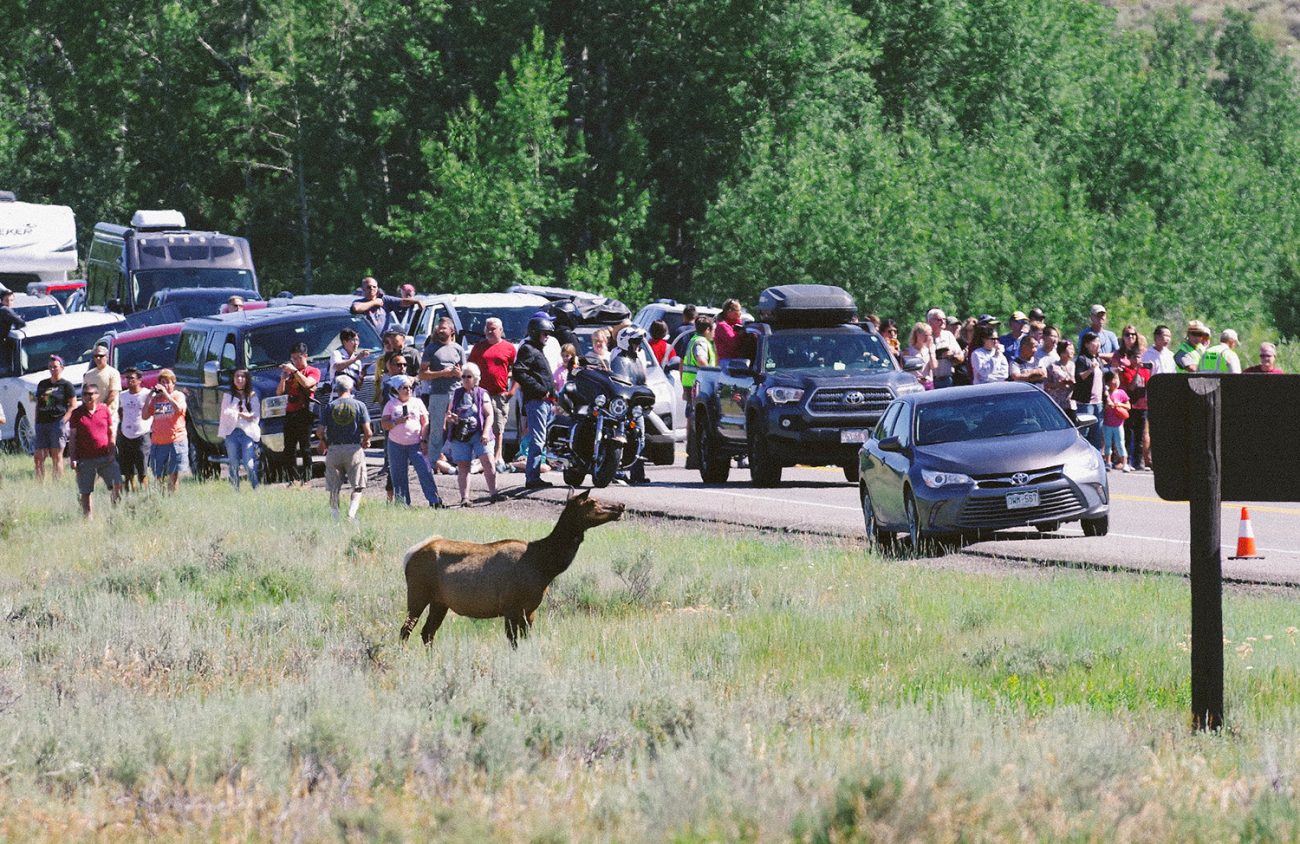Last summer, for the first time in four decades, I visited Yellowstone National Park. A 3,500-square-mile rectangle in the northwest corner of Wyoming, Yellowstone is nearly three times the size of Rhode Island. It’s the queen of national parks, the first in the U.S. and one of the first in the world.
It’s also one of the most visited.
My visit came during a cross-country trip with my son in August, near the height of tourist season. Our first morning driving into the park, we rounded a corner and were stopped by gridlock. Scores of people had parked, in the road and on its shoulder, and were standing outside their cars to look at a small herd of elk.
With the help of a ranger, who had stopped traffic, most of the herd had crossed from one side of the road to the other while tourists took hundreds of photos. A single calf, apparently upset by the enormous human audience, was balking and wouldn’t cross, leading to a half-hour standoff.
With different animals — bison, elk, deer, bighorn sheep, a black bear mistaken for a grizzly by overexcited tourists who had to be repeatedly ordered by a frazzled ranger to “Back off!” from the quietly foraging bear — we would repeat this experience over and over during the three days we visited Yellowstone.
The encounter clarified the doubt I’ve had about tourism for a while. Is tourism over?
People are certainly making that argument, for a variety of reasons.
Tourists around the world are becoming a problem. Sunflower farmers in Canada saw their crops trampled by selfie-seeking tourists with phones. Last spring officials in Lake Elsinore, California, shut off access to a nearby canyon full of blooming golden poppies when an estimated 50,000 people arrived in the town of 66,000 on a single weekend to view the bloom.
So many tourists throng Venice, Italy — an estimated 25 million last year — that the canals have gondola traffic jams.
Tourism is being done-in by sheer numbers. Yellowstone recorded 4.2 million visitor-days in 2018. That’s as if the entire population of Oregon decided to drop in sometime that year, with some of them bringing friends from California.
As the numbers grow, so does the idiocy.
A month after we saw Old Faithful erupt, an experience we shared with perhaps a thousand other people seated in bleachers, a beer-drinking tourist on a late-night stroll plunged into a scalding hot spring near the famous Yellowstone geyser. He was airlifted to a hospital in Idaho with severe burns. That same month two other men were arrested and sent to jail for 10 days for walking across the dangerous thermal area.
The biggest slam against tourism may not be aesthetic, but environmental.
A 2018 study published in Nature Climate Change found that 8 percent of greenhouse emissions worldwide stem from tourism. That flight to Disney World is hastening the end of the real world.
Do we have to stop vacation travel? The road trip is as sacred to Americans as baseball. It will be hard to let go of wanderlust.
Growing up as an Air Force brat (for the uninitiated, that means my family moved a lot) I have fond memories of driving cross country in my parents’ gray ’51 Mercury in those sweet pre-seatbelt days when a kid could sprawl across the back seat of a full-size sedan or even read a comic book while lying atop the rear window’s sunny deck. We visited national parks and tourist traps and stayed in lakeside cabins and auto courts, which were increasingly called “motels.”
Travel was all about the outdoors, fried egg breakfasts over a campfire and driving two-lane highways through postcard scenery.
Years later, when I was grown up and had my own pickup camper, I drove with a friend from my home in Los Angeles up through British Columbia into Yukon, where we turned north onto the then-brand new Dempster Highway, a 450-mile wilderness road that leads across the spongy tundra to the Bering Sea.
We crossed the Arctic Circle, learned about real mosquitoes, met a tavern owner so lonely he kept giving us free beer so we would stay and talk and, finally, turned back a hundred miles short of the sea, having run out of time when we were mired by a rainstorm for three days in the middle of the slick, deserted gravel road.
No one passed by except an airplane, once a day. It was heaven.
That uncompleted journey was 40 years ago. I’ve always wanted to go back and travel that last hundred miles to the Bering Sea, but I’m afraid to imagine what the Dempster Highway looks like today.
